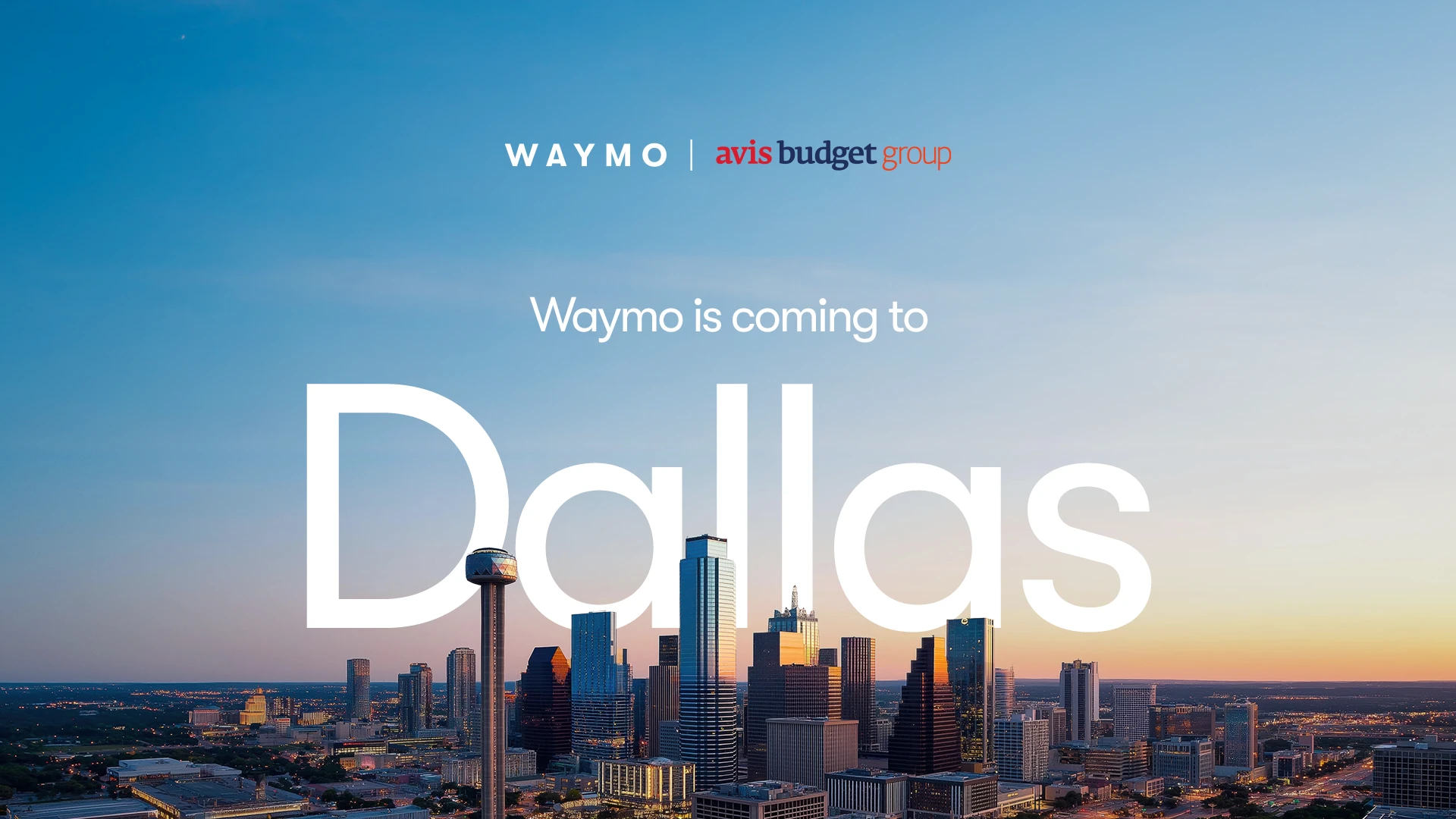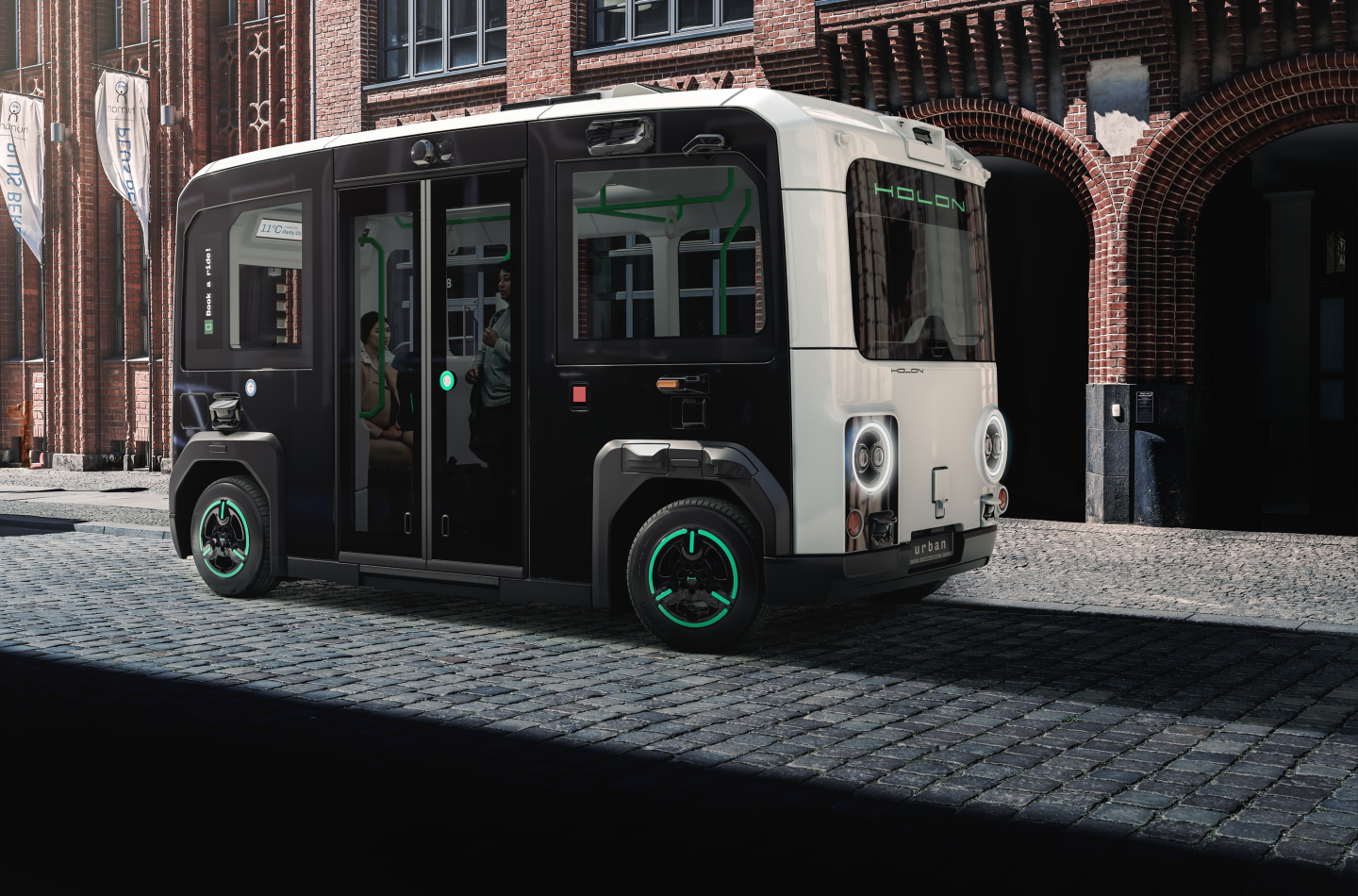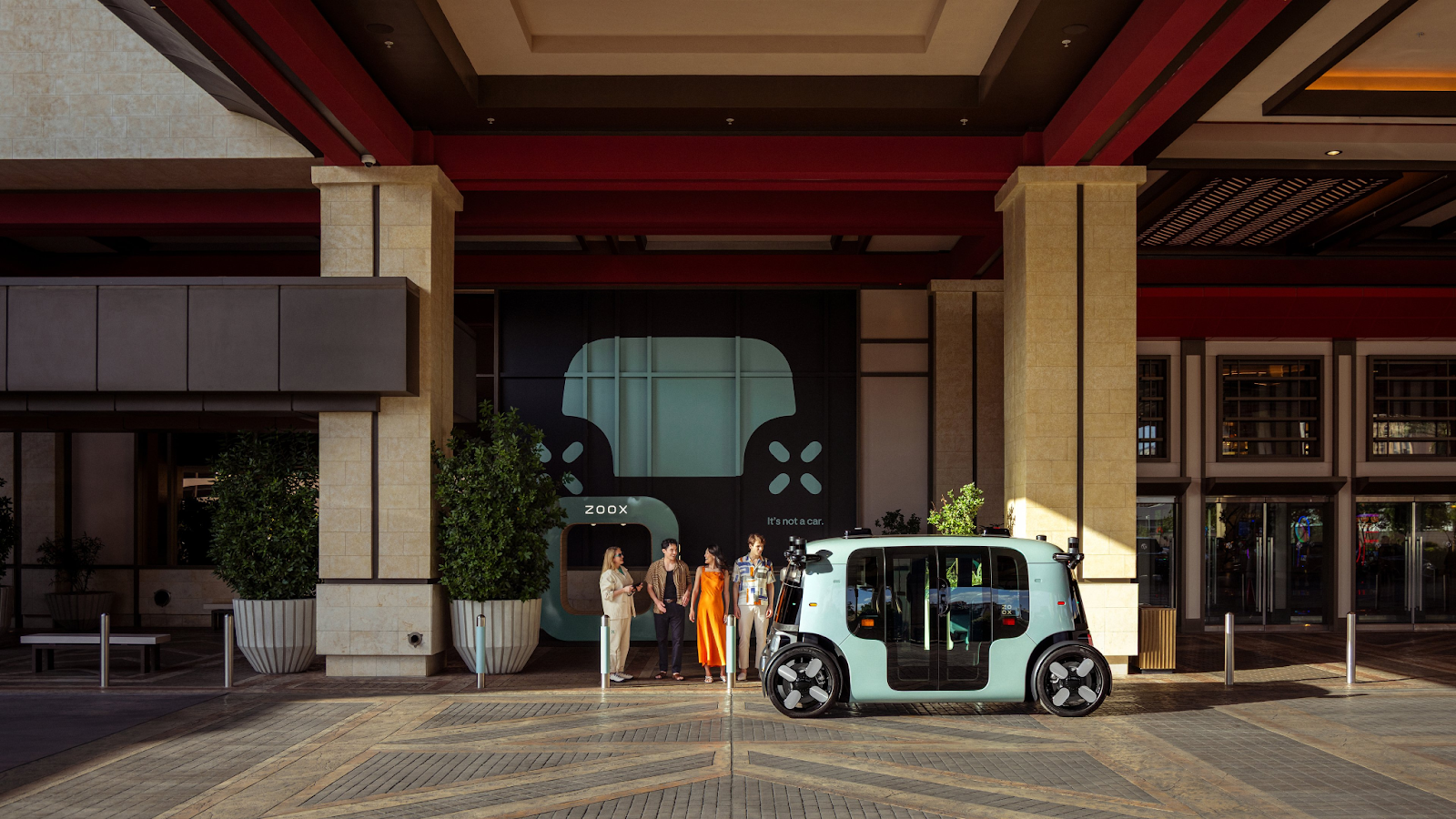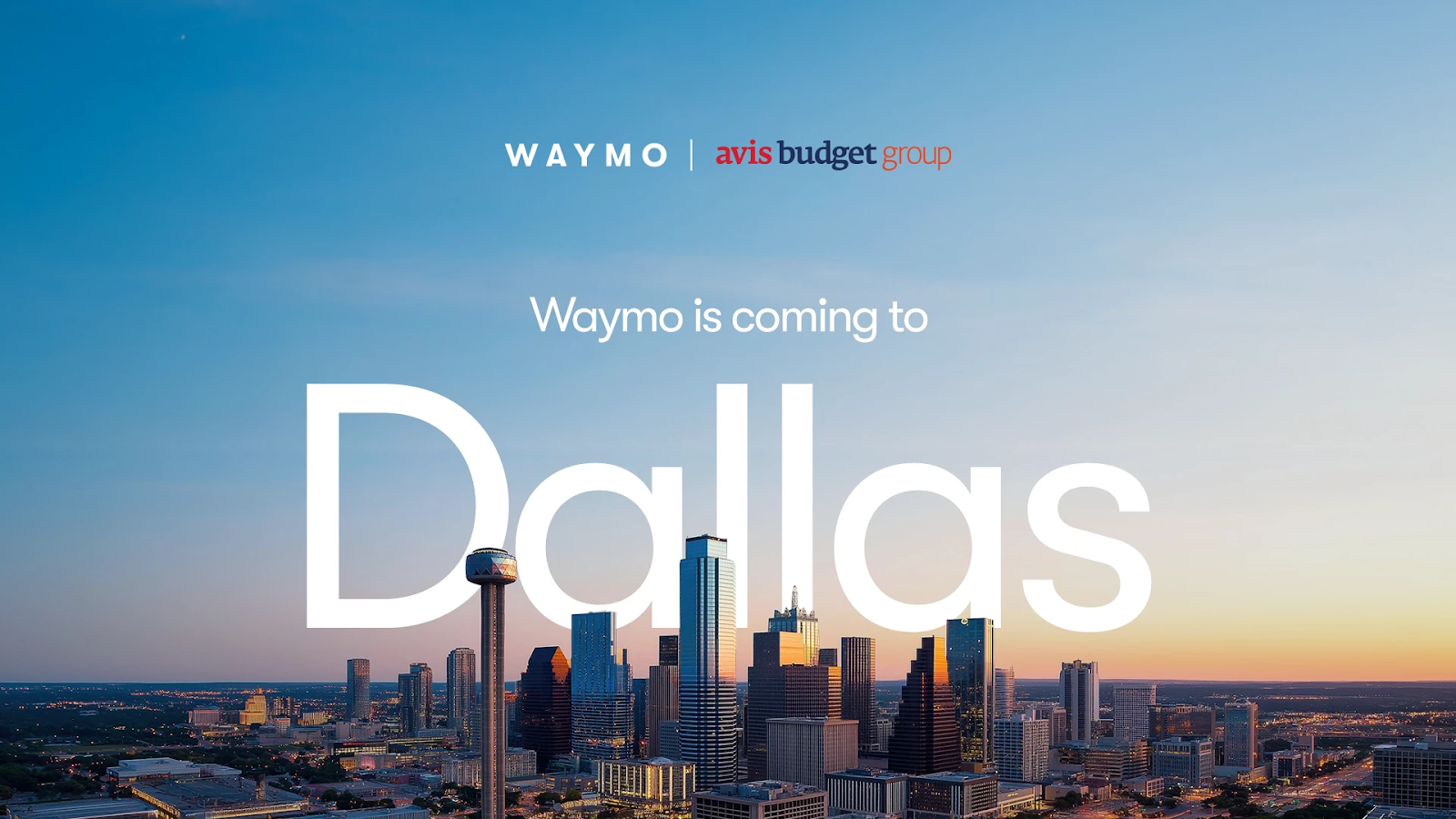
Welcome to the Ride AI newsletter: your weekly digest of news and intelligence at the intersection of technology and transportation.

The company will partner with Benteler Mobility, a Swiss company delivering turnkey autonomous solutions, to launch the shuttles, which will be manufactured by Holon, a German company. The shuttles can travel up to 37 mph, fit up to 15 people, and will rely on Mobileye's L4 autonomous driving solution, which Lyft will also use to launch its fleet of robotaxis next year.
While no routes have been established yet, Holon did announce plans to launch a 500,000-square-foot manufacturing facility in Jacksonville, Florida, back in January. Holon also has plans to deploy its unmanned shuttles in urban environments.

The program allows riders to board a Zoox Robotaxi that drives in a loop around the Las Vegas Strip. The ride starts and ends at Resorts World Las Vegas at a special Zoox-branded PUDO (pickup/drop-off) point and is only available from 11 a.m. to 1 a.m., with availability subject to change. According to Zoox's official X account, those who want to try the service can call or text Zoox Support at 1-888-477-5055 to check whether Zoox is operating at any given time.
A spokesperson for Zoox informed Ride AI that Zoox will launch an official ride-hailing service in Las Vegas "in the coming months" and that more information will be announced at that time.

In a surprise move, Waymo has partnered with Avis to handle its upcoming Dallas robotaxi deployment end-to-end. Until now, Waymo has partnered with Moove to manage its fleets in Phoenix, Arizona, and Miami, Florida. Earlier this month, Moove announced that it would be buying Waymo vehicles outright. The shift in strategy could be why Waymo is now partnering with a different fleet manager for fleets it owns.
As part of the partnership, Avis will handle everything related to the Dallas deployment, including infrastructure, vehicle readiness, maintenance, and depot operations. This could mean that Waymo will be able to offload significant upfront deployment costs onto Avis.
Waymo will also make its Dallas deployment available via the Waymo One app instead of on Uber, which is currently handling its Austin deployment.
Supposedly launched this past weekend, Tesla's San Francisco ride-hailing service is very much not a robotaxi service... technically.
Business Insider reported on Friday that Tesla staff had received an internal memo on Thursday detailing the company's plans to launch its robotaxi service in San Francisco that weekend. The memo stated that the San Francisco deployment would have safety drivers in the driver's seat and that the safety drivers would be able to control steering and brakes.
Following the internal memo, Tesla updated its service agreements in the app on Saturday to further clarify that rides taking place in California would be conducted with a safety driver using the company's "FSD (Supervised)" software.
The move alarmed policymakers in California. In response to the Business Insider story, California Senator Scott Wiener posted on X, "Tesla doesn't have permits to deploy AVs in California & hasn't even applied for permits." However, this statement is only true for a fully driverless deployment.
Meanwhile, on the ground in San Francisco, I haven't seen any Teslas with the Robotaxi wordmark driving around. I did notice an unusually high number of "Juniper" hardware Model Ys on the streets, but they seemed to contain drivers with their hands on the steering wheel and, at times, somebody sitting in the front passenger seat.
The movie-length video tests the highway ADAS features of various car models from a variety of manufacturers, both Eastern and Western, and puts them through several scenarios. There has been a lot of talk about this video and what it means, but I think it would be useful to first give some context around the video.
The video was produced by DCAR STUDIO, which is a media company focused on reviewing and testing cars. The Chinese name roughly translates to "The King of Understanding Cars," with the closest comparable Western entity being Kelley Blue Book. DCAR's parent company is ByteDance, which also owns Douyin, commonly known in the West as TikTok. Although DCAR is not directly government-affiliated, it does have government connections, which is why the company was able to collaborate with the Chinese government and close down a whole stretch of highway for these tests.
While DCAR has conducted tests like this on a closed course since 2020, this is the first time the company has done such a test on a public highway. DCAR explains that while conducting tests on a closed course would have been much safer, a lot of the ADAS systems nowadays rely on HD maps and so could not be activated off mapped roads. Thus, it did the necessary work to request closure of a 15-kilometer stretch of public highway to conduct its tests.
The video consists of six tests conducted in both day and night lighting conditions. The tests include common highway situations such as temporary construction zones, crashed vehicles blocking the lane, aggressive drivers, and pigs running in front of the car. If a car broke in the course of testing, it was disqualified for the rest of the tests.
If you don't have the time to watch an hour-and-a-half-long video in Chinese, I've summarized the test results here for you:
Best Performing (Passing 5 out of 6 tests): Tesla Model 3 (2023), Tesla Model Y (2023)
Average Performing (Passing 3 out of 6 tests): Avita 12, Xiaomi SU7, IM LS6, Voyah FREE, Zhiji LS7, Leapmotor C11
Worst Performing (Passing 2 out of 6 tests or worse): Aion RT, Geely Galaxy E8, AITO M5, Xpeng G6, Nio ET5, Li Auto L6, BYD Song L DM-i, Mercedes C-Class (broken), Nio ES6 (broken)
Complete Fail (Passing none of the tests): Zeekr 001, BMW 3 Series PHEV, Cadillac CT6, BYD Han EV
Keep in mind, however, that while it's easy to draw conclusions about what sensors are "better" from the test results alone, the situation is significantly more nuanced.
As DCAR stated in the video, the issue boils down to software handling of sensor input. While most cars were able to detect obstacles in the road early on regardless of sensor type, the majority of failures happened due to the respective software's inability to react or understand what was happening.
On multiple occasions, the tested ADAS would show the accident-causing vehicle on its visualization and even highlight it. But the car's emergency braking systems either did not provide enough braking power to stop the car in time, did not activate at all, or, in the most drastic cases, would simply disengage ADAS entirely. On other occasions, the ADAS would attempt to reroute the car around the hazard by cutting into the next lane, only to be blocked by the other cars in that lane. This would also waste valuable braking time, resulting in a crash. The systems that performed well in the tests ended up being the ones that braked immediately without attempting to reroute the car.
DCAR also only tested ADAS capabilities. This means in some instances, more advanced feature sets were not active. DCAR also did not control for other variables such as follow distance. These latter points have been brought up in many online discussions. However, DCAR has stressed that the video was a demonstration intended to be a wake-up call, not a scientific test.
The video's English subtitles also often involved mistranslations or would misconstrue the presenter's original meaning, with one of the most egregious examples being translating a phrase originally meaning "We'll need to call a 1-2-0 over" into "One car came at least 120 km/h." The number to dial for an ambulance in China is 1-2-0.
While DCAR is careful not to draw any firm conclusions in the video, it's hard to ignore the timing of the video. I had previously reported on the Chinese government's growing concern about Chinese manufacturers overstating the capabilities of their ADAS systems. With this video apparently having been helped along by certain government entities, it could be the case that there was a desire to call out the manufacturers in order to push them to improve their systems. Whatever the case, it is certainly an eye-opening video.
While we didn’t receive any questions we could provide an answer to in this newsletter, I encourage you to ask any questions you may have in the comments below and we will try to get you the answer!
Alright, that’s it from me… until next week. If you enjoy this newsletter, share it with your friend, colleague, or boss. Thank you for reading; Sophia out!
Get all the latest news in AI x Mobility across the globe.
Continue reading more about the world of robotics, automation, and AI